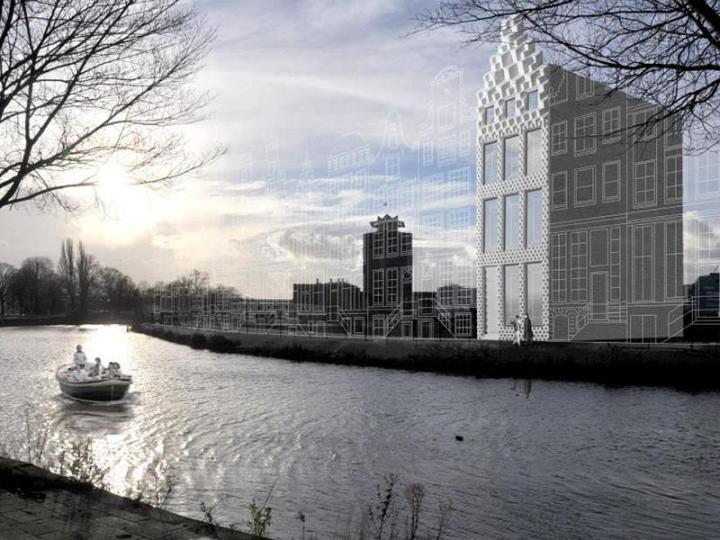
From life-saving implants to cars and furniture, it seems that the capabilities of 3D printing are constantly expanding. Now work on a full-scale house has begun in Amsterdam, an ambitious proof-of-concept project that is expected to take three years to complete.
Dus Architects is the firm behind the building project, which uses an industrial-scale KamerMaker (Room Builder) 3D printer to produce plastic parts that are then locked together to form walls, floors and furniture. Eventually, the house will have 13 separate rooms, with lightweight concrete used to provide structural support and insulation.
“We’re still perfecting the technology,” Dus Architect’s Hedwig Heinsman told the Guardian. “We will continue to test over the next three years, as the technology evolves… It’s an experiment. We called it the Room Maker, but it’s also a conversation maker.” President Obama was shown some of the prototype designs during his visit to the Netherlands last week.
If the technology becomes practical enough to be used on a more widespread basis, it could change the way buildings are constructed. Waste and transportation costs would be dramatically reduced, while 3D-printed homes and offices could theoretically be recycled when they were no longer needed. The material currently being used by the project developers is a bioplastic mix which is made up of plant oil and microfibres.
“This could revolutionize how we make our cities,” says Heinsman. “This is only the beginning, but there could be endless possibilities, from printing functional solutions locally in slums and disaster areas, to high-end hotel rooms that are individually customized and printed in marble dust.”
After three weeks of work, the 3D Print Canal House team have put together a 3 meter-high sample corner that weighs 180kg. As more parts are completed, they will be stacked up in the style of a Lego structure. To view the plans in more detail, and to see images from the construction area, head over to 3D Print Canal House’s official website.
Editors' Recommendations
- 3DMakerpro’s Seal is a pocket-sized scanner to make next-gen precision 3D prints
- Need a last-minute Halloween costume? Check out these 3D-printable getups
- The best 3D printers under $500
- The future of making stuff: Inside the evolution of 3D printing with Formlabs
- Inside the quest to 3D print a perfectly palatable steak


